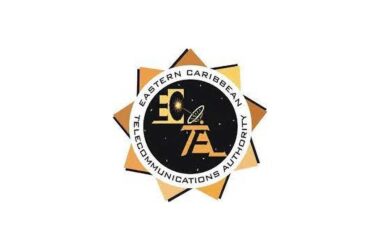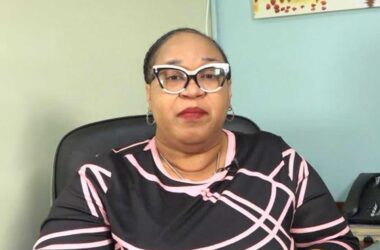By VOICE Reporter
SAINT Lucians are being called-upon by the Water and Sewerage Company (WASCO Inc.) to realistically assess the grave problems and challenges facing the local water company and start to understand that the only way it will be able to remain floating is through urgent capital injection, whether by government, through a rate increase, or both.
That was the strong but simple message sent out by WASCO as Saint Lucia observed World Water Day (March 22) last week.
WASCO also announced a major review of the island’s water operations was under way, including a “pricing review”.
The disclosures were made during a panel discussion at a Breakfast Briefing at the Harbor Club in Gros Islet, where local, regional and international delegates reviewed latest developments affecting water in Saint Lucia and the OECS.
The World Water Day 2024 event was organized by the Saint Lucia Conservation Caucus, the ICCF Group and the OECS Commission, under the GEF-funded UNEP-implemented project ‘Enhancing Conservation in the Eastern Caribbean’.
Under the 2024 theme ‘Water for Peace and Prosperity’, the meeting heard a keynote address by former Sant Lucia Water Minister Dr James Fletcher, on ‘A Water Adaptation Plan for Climate Resilience and/or Sustainable Financing for the Water Sector’.
Other presenters included: Executive Director of the Caribbean Water and Sewerage Association (CAWASA) Ignatius Jean, Programme Management Officer for Marine Pollution with the Cartagena Convention Secretariat of UNEP Laverne Walker and Chair of the Saint Lucia Hotels & Tourism Association (SLHTA) Environment Committee Carl Hunter.
The CAWASA Executive Director presented on ‘Water & Sanitation Progress Through Partnerships and Cooperation’, while the UNEP Representative spoke on ‘Pollution and Integrated Water Resource Management’ and the SLHTA rep spoke on ‘Maximizing the Guest Experience while Minimizing the Use of Water’.
WASCO’s CEO Zilta George Leslie spoke on ‘Challenges as a Utility Provider, Including Non-Revenue Water’.
She updated participants on the declining state of the utility’s resources and infrastructure and noted it was impossible to monetize non-revenue water or meet the spiraling costs of more-frequent repairs to the entity’s aged infrastructure, with current financial resources.
Mrs. George-Leslie recalled the case made by Infrastructure Minister Stephenson King – ten days earlier – while unveiling proposals for a thorough assessment of WASCO’s operational mechanisms, including price adjustments and evaluating existing water rates.
She also reminded that WASCO consumers pay only EC $12.21 (US $4.50) for a thousand gallons of water and EC $3.00 (US $1.10) for 24 fluid ounces of private bottled water – or as the minister said earlier “easily” paying EC $10 (US $3.69) “for two local beers…”
Outstanding and costly infrastructure repairs are urgently needed for the John Compton Dam and major pipelines throughout the island are 48-years-old, with nationwide connectivity still a distant goal.
In 2013, WASCO’s rates were increased by 66%, with a portion of the proceeds allocated towards desilting and rehabilitating the dam, but the same old problems persist and are worsening, necessitating a comprehensive overhaul of the existing framework.
The minister and WASCO are hoping the reviews and projections will identify areas for improvement and efficiently address inefficiencies.
Minister King promised that “water rates will align with operational needs, enabling WASCO to undertake necessary upgrades and improvements, to better supply consumers.”
The WASCO Managing Director identified a long list of challenges facing the utility, including “aged infrastructure, service disruptions and five kilometres of problematic raw water lines,” alongside “increasing demands across all sectors”, some associated with population growth.
She also identified effects of climate change, including dry spells resulting in low water levels, high turbidity from hurricanes, higher costs for treatment, high temperatures and reducing rainfall, a 50% reduction in storage capacity at the John Compton Dam, 56% loss of non-revenue water since the last audit, illegal collections and increased vandalism, with 19 meters recently “cut-off” in a northern community.
Besides, non-revenue water is staggering and much water produced is lost through leaks and damage.
The WASCO MD stressed that despite its best efforts, the utility continues being drowned by accumulated debts and increasing arrears, while water availability decreases — to the extent that WASCO recently had to stop providing water to cruise ships, to ensure there’s enough for local consumers.
She said while WASCO was talking about and praying for a rate increase, it hasn’t yet formally engaged the Public Utilities Commission (PUC) on the matter, but all indications are that it will eventually have to, as water is “the only utility being regulated.”
But WASCO isn’t only asking for the more money it needs without making positive recommendations.
The CEO said WASCO also wants to promote conservation practices, improve leak detection, activate remote survey mapping systems, diversify water sources, encourage alternative water harvesting (including rain water), engage in more long-term financial planning and investing more in infrastructure.
She said 2024 should be a year for WASCO to face and address these strategic challenges, which it hopes to pull together for inclusion in its2024-2029 Action Plan.
But without what the WASCO CEO and the Minister consider “very affordable” water rates being revisited and the government deciding to invest more in water, consumers will most-likely have to continue living with worsening water woes.













